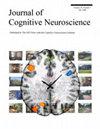Electroencephalographic Functional Connectivity, Heartrate Synchrony, and Eye Movements Reveal Distinct Components within Narrative Engagement and Immersion
IF 3
3区 医学
Q2 NEUROSCIENCES
引用次数: 0
Abstract
Storytelling is a fundamental and universal human behavior, representing a vehicle for cultural information exchange throughout human history. In the present day, consumption of narrative audiovisual media is one of the most common recreational activities worldwide. Despite the importance and ubiquity of storytelling, relatively little is known about the neurocognitive mechanisms by which narrative media capture and sustain our attention. In this study, 40 participants watched 10 short clips from television shows of various genres while electroencephalography, eye tracking, heart rate, and self-report data were recorded. Self-reported immersion and three of the four components of narrative engagement that we examined—attentional focus, emotional engagement, and narrative presence—were associated with interindividual synchrony in heart rate and gaze behavior, but were associated with relatively distinct patterns of neural activity (electroencephalography power amplitude and functional connectivity). Narrative understanding, on the other hand, was not associated with heart rate or gaze synchrony. Furthermore, structural equation modeling revealed directionally opposing relationships between overall alpha-band connectivity and narrative presence on the one hand (positive), and narrative understanding (negative) on the other. These results suggest narrative understanding may be associated with a different set of neurocognitive processes to the other dimensions of narrative engagement. These findings point toward a bifurcated model of narrative engagement and raise interesting theoretical questions about the role of narrative comprehension in this process.脑电图功能连通性、心率同步和眼球运动揭示了叙事参与和沉浸的不同组成部分。
讲故事是一种基本的、普遍的人类行为,是人类历史上文化信息交流的载体。在当今世界,叙事视听媒体的消费是世界上最常见的娱乐活动之一。尽管讲故事很重要,而且无处不在,但人们对叙事媒体捕捉和维持我们注意力的神经认知机制知之甚少。在这项研究中,40名参与者观看了10个不同类型的电视节目片段,同时记录了脑电图、眼动追踪、心率和自我报告数据。自我报告的沉浸感和叙述参与的四个组成部分中的三个——注意力集中、情感参与和叙述在场——与心率和凝视行为的个体间同步性有关,但与相对不同的神经活动模式(脑电图功率振幅和功能连接)有关。另一方面,叙事理解与心率或凝视同步无关。此外,结构方程模型还揭示了整体α带连通性与叙事存在(正)和叙事理解(负)之间的反向关系。这些结果表明,叙事理解可能与叙事参与的其他维度的一组不同的神经认知过程有关。这些发现指向了一个叙事参与的分叉模型,并就叙事理解在这一过程中的作用提出了有趣的理论问题。
本文章由计算机程序翻译,如有差异,请以英文原文为准。
求助全文
约1分钟内获得全文
求助全文
来源期刊
CiteScore
5.30
自引率
3.10%
发文量
151
审稿时长
3-8 weeks
期刊介绍:
Journal of Cognitive Neuroscience investigates brain–behavior interaction and promotes lively interchange among the mind sciences.

 求助内容:
求助内容: 应助结果提醒方式:
应助结果提醒方式:


